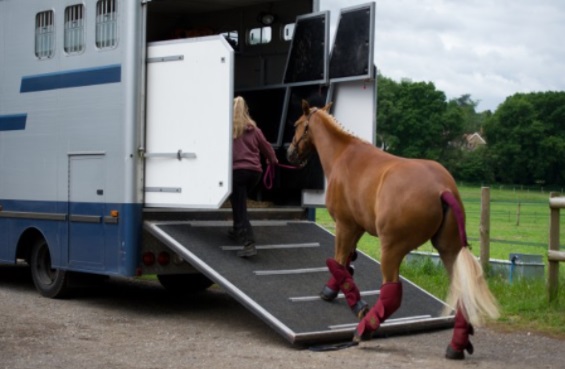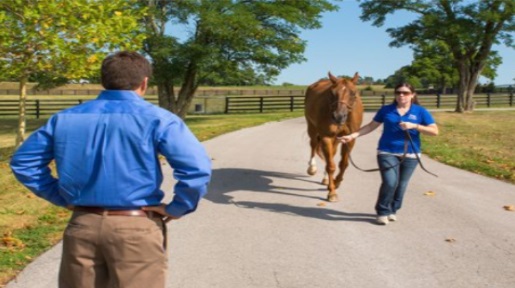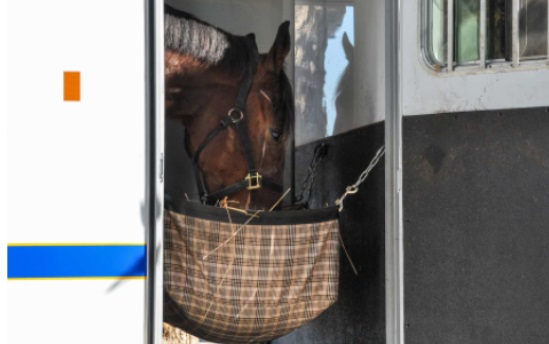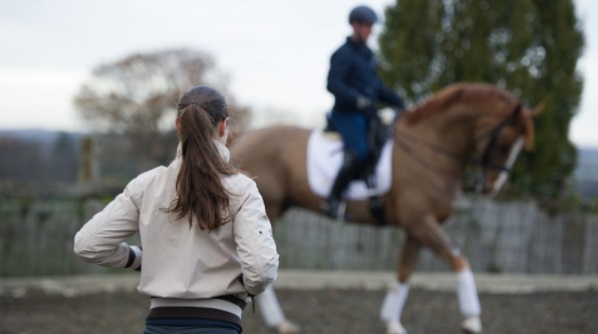We frequently pull our ponies to trail rides, rodeos, and race tracks. More often than not, our movements are short, yet here and there we go on our ponies on broadened outings. So Double D Trailer figured it would be a smart thought to share how we set up our ponies for a long excursion.
When pulling a pony for significant distances, make sure of certain factors. Like, guarantee your creature is good for voyaging and is current on all fundamental immunizations. Wrap your ponies’ legs, plan your course, and timetable stops. Continuously have reasonable sheet material in your trailer and a lot of roughage and water for the excursion.

Horse proprietors have a certain amount of excitement before they leave for a long journey with their beautiful friends. In any case, it’s fundamental to take some time. And plan for your outing to keep away from issues out and about.
Sadly, there is not much relevant data available to help horse owners find a perfect guide while travelling with these beautiful creatures. Underneath we’ll examine the primary classifications and their subclasses you want to address. Once readers go through the following steps properly, you are good to go!
Remaining in a moving trailer for quite a long time negatively affects a pony both intellectually and genuinely. Ponies’ trailers are ordinarily excessively hot or excessively cold, contingent upon the season.
Ponies are essentially free-wandering creatures. But we secure in the bound space of a pony trailer with diminished perceivability, new sounds, and movements the pony can’t expect. We should consider these variables when intending to pull ponies.
A horse gets tired and exhausted while on a trailer. And for broadened trips, the pressure on these creatures increases dramatically. These monstrous creatures need to strive to keep up with their equilibrium during unexpected changes of speed and turns.
Ponies pulled for stretched out trips should be good for movement; this implies various things for various ponies. Yet, normally, a pony can run at a stretch for about forty minutes. And then, at that point, jog for ten minutes and recuperate to its customary pulse and take in around ten minutes.

A large portion of the journey ponies have to stay fit. Horse owners must prepare them for the movement after a little check-up. Notwithstanding, a portion of our path riding ponies need to improve shape before pulling. In those cases, it is important to regularly begin working with them five weeks before our outing. For the primary week, ride them thirty minutes as long as an hour daily, for the most part at a walk.
In the subsequent week, ride them for an hour with 45 minutes of strolling, Followed by 15 minutes at a sluggish jog. In the third week, increase their jogging time to thirty minutes. Finally, in the fourth week, keep riding them for an hour yet present five minutes of running.
In the fifth and last seven day stretch of getting our ponies fit, run the ponies for forty minutes. And follow that up with ten minutes of jogging, do this three times each week yet ride five to six days per week.
Make certain to watch out for your pony’s recuperation time after an exercise, and give extraordinary consideration to their hydration. Ponies lose a great deal of water and electrolytes during preparation, particularly in blistering environments.
Assuming your pony’s pulse or breathing is high for a drawn-out period, it might have a respiratory infection or be unsuitable for movement. This short work-out schedule works incredible and as a rule, has our ponies prepared for the long stretch and trail ride.
Since trailer slows down are new to a pony, smothering hot, and encompassed by uproarious commotions and new scents, ponies are inclined to perspire unreasonably and get dried out.

Lack of hydration is a perilous condition that requires quick consideration; whenever left untreated, it can prompt colic and even passing. A few indications of equine parchedness are high pulses, red mucous films, and working relaxation. Ponies regularly decline to drink on the way, basically for the initial not many hours, so it’s crucial to start the outing with an all-around hydrated pony.
There are some accessible substances that you can add to your pony’s feed. It will make them thirty and burn through more water. You can likewise add water and a teaspoon of salt to their everyday feed proportions, this expands their craving to drink and builds hydration.
There are a few straightforward ways to look at the ponies to decide whether it is dried out. I first glance at its gums; all around hydrated ponies’ gums are pink; assuming they are pale then, at that point, I play out a “skin tent” test.
Ordinarily, a pony’s skin is exceptionally versatile; if you pull up the piece close to the shrimps and it stays raised like a tent, your pony is probably dried out and needs water and perhaps electrolytes.
On the off chance that your pony is dried out, please take a pause and get off the trailer. And immediately, bring them to a concealed region, give water and electrolytes quickly. Assuming there is an accessible water horse, wash your pony and scratch off the overabundance of water.
Whenever your pony first rides in the trailer shouldn’t be a long excursion. Make sure your horse is aware of the trailer. So, they can navigate without any issues.
Horse owners should instruct their ponies to stretch and dump before pulling to decrease the pressure related to shipping. Stacking a pony not acquainted with getting in a trailer is upsetting and can prompt antagonistic medical issues like ulcers.

Leg wraps and chime boots offer help and assurance for ponies when voyaging. Be that as it may, be cautious when utilizing them for long outings; they can thwart blood flow and cause wounds.
In case you choose to utilize wraps, look at your ponies’ legs during each rest stop. It is important to wrap each of our pony’s legs when we pull them.
It is convenient to pull the horses with a cowhide strap. You don’t need a solid nylon bridle on your pony when pulling. If you are a fanatic of nylon straps, utilize one with a breakaway element.
The course you take decides what hard the ride means for your pony. Pick the smoothest straightest conceivable way, and consistently attempt to plan your excursion during the best temperature for your creature.
During cold weather days, travel during the day. And in the late spring, invest the majority of your energy out and about around evening time.
Check the web and plan a course that has regions with shade to stop your apparatus. So that your horses can get some rest. Halting permits your pony to loosen up in the trailer.
The area we stop directs on the off chance that we remove the ponies from the trailer.
Notwithstanding, on our courses, there exists a few areas that we stop. Make sure that the areas are safe. Also, it is important that they have a lot of room so that horses do not run away.
Generally, you should give them new water and top off their feed sack. Also, ordinarily stop for 45 minutes, yet no under 30 minutes. In case your excursion is more than eight hours, you should empty the ponies for a brief time.
During long outings, give an adequate measure of feed in the trailer for your pony. It is ideal to utilize a hanging roughage net at chest stature or higher.
Certain individuals exhort just taking care of damp feed during trips. However, it is important to supply our pony the scavenge they need.
The hypothesis behind taking care of damp feed is sound; it gives additional hydration, diminished gas, and perhaps mellow their stools.
Have a human and equine medical aid pack. The groundwork for the beginning of the journey is principal, particularly when going with ponies.
Incorporate all vital tack, covers, straps, and additional lead ropes. You additionally need to affirm you have additional sheet material, cans, and your fire quencher stacked.
Continuously pack clothing fitting for the temperature. Despite the fact that you might be going to an indoor field, assuming you’re stuck out and about on a chilly night you must have something warm for both you and the horses.
Usually, during traveling, horses do not feel very comfortable amidst all the noise and vibrations from the surroundings. The ears of a horse are very potent to engine frequencies and vibrations and these things can increase anxiety in them. Music can be a very effective tool to calm your horses. The soft melodies and strong rhythmic patterns in any music can help your horses feel less anxious during long-distance travels, especially in a situation where they are backed into the trailer. Other than music, some audiobooks can also be very useful in making your horse feel more comfortable. You can download some good audiobooks from websites like 10AudioZ that are narrated soothingly and smoothly. Just play them during your trips and your equine passengers will definitely love them.
You should have a legitimate tow vehicle to pull your pony trailer. Actually, look at the rating on your truck against the heaviness of the stacked trailer. An over-burden tow vehicle doesn’t deal with well out and about and is a threat to you, your pony, and different voyagers on the roadway.
At the point when you at long last arrive at your objective, give your pony time to rest and recover prior to requesting that it accomplish any demanding work.
Ponies travel better when it is cool, so adjust ventilation, garbage out where conceivable and try not to go in the fierceness of the day. Assuming the voyaging conditions are hot or moist and the ponies sweat more. Then, at that point, you must provide them with sufficient water.
Perhaps the most concerning issue for the significant distance equine voyager is the act of tying ponies up by their headcollars. The goal is to prevent them from landing up in an unnatural head-held-high stance. Typically, they would put their head down, however, while voyaging they are kept from doing as such. This will influence the freedom of bodily fluid from the aviation routes, just as making microorganisms plummet towards the lung. Together, this expands the danger of pneumonia and chest disease. It is known as delivery fever, which affects around 6% of ponies assuming they are moved for more than 8-12hr.

At each chance, let the ponies put their heads down and eat and drink. Once dumped, they should show interest in roughage and water inside 2hr and in case they are not intrigued, please check their temperature. It is reasonable to actually look at their weight on appearance, over and again check the temperature and watch cautiously for indications of illness, weakness or injury.
Late work on immunological impacts of transport inferred that there are quantifiable contrasts in resistance of shipped ponies. Following vehicle stress, their invulnerability takes around 24hr to recuperate, so they might be more defenceless to irresistible infection.
Apparently, long excursions throughout a few time regions can be unfavourable. It is important to make sure that a pony has a few days to recuperate prior to contending abroad.
Work has been done on significant distance equine travel, yet a lot of what has been realized likewise applies to more limited excursions. In spite of arranging, any little excursion can turn out to be confusing, so it is ideal to be ready.

We often see people riding horses or in the race tracks and so many other places. But it is often neglected that they also get exhausted and tired. When horse owners take their horses for a long haul, they give them company, also security to some extent. So, it is their responsibility to be cognizant of the fact that horses while on a journey need care. The weather conditions, the respiratory issues horses might incur, how often they get tired, everything must be taken into account. Hope this article was helpful and insightful for future reference. Keep updating yourselves with such insightful articles and blogs for a better travel experience with your horses!
Hayley Blacker reviewed Best Haaf Stables
I have know Lauren for a while whilst we shared the same stables - and her care for her stables ... Read more
Samantha Francis reviewed Brook Farm
Lovely yard with first class facilities and care. My horses are very happy and relaxed and as a result so ... Read more
Sarah reviewed Ferry Farm Livery Yard
100% recommend. Great yard with excellent range of facilities. Careful paddock management for year round turnout and no mud even in ... Read more
Subscribe today and receive latest Livery List news and guides direct to your inbox